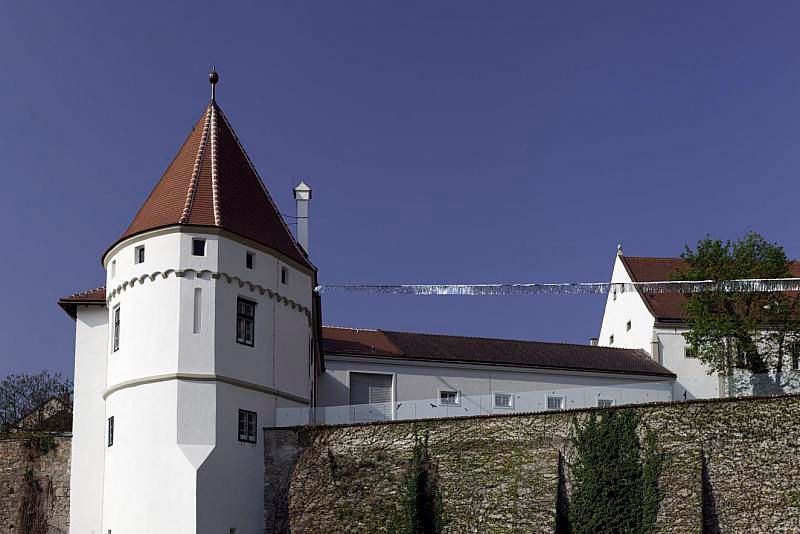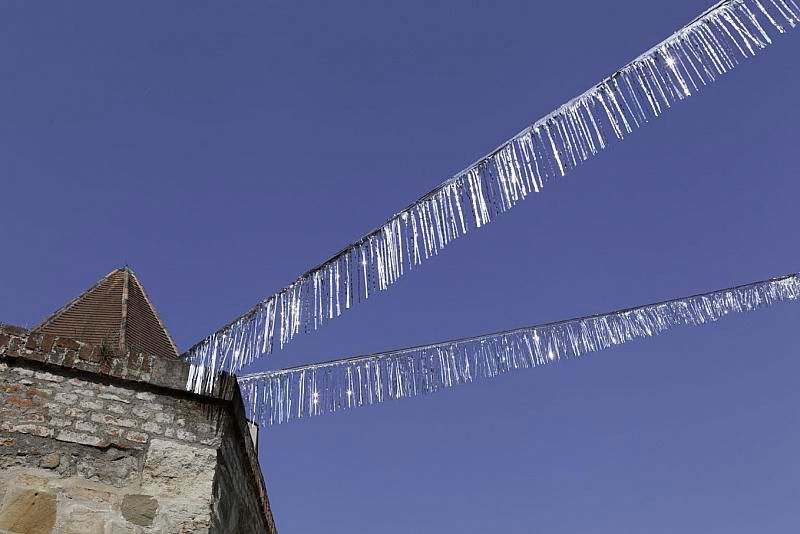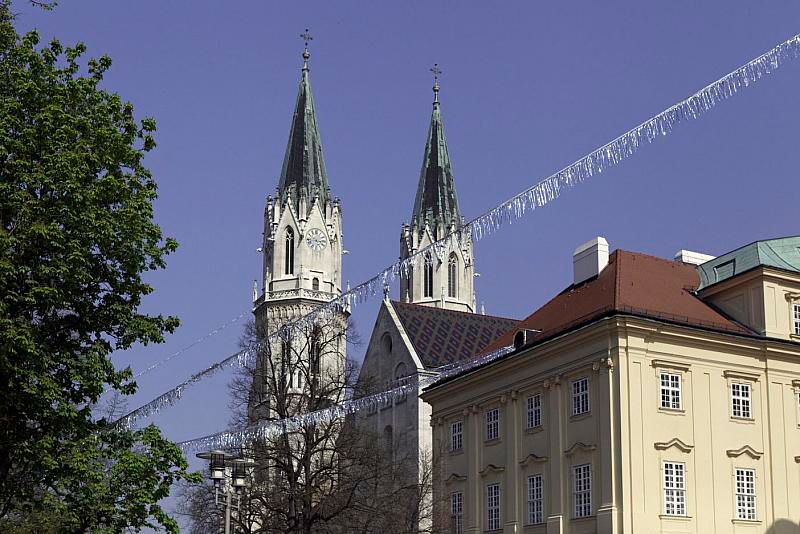Hier & Jetzt / Hic & Hunc
BackArtists
- With
Information
The Klosterneuburg Monastery is one of Austria's most important centers of cultural history. Its fascinating history brings together many political and religiopolitical events. The monastery also has a long tradition of engaging with art. As an important contribution to this tradition, the project Hier & Jetzt (Here & Now) invited artists to make interventions directly at the site, thereby engaging in an open dialogue with the monastery, without knowing what the end result of this engagement would be. Today, secular and religious centers – like castle complexes, churches, or monasteries tell us a great deal about the past and the power structures that have lasted for centuries (or that have been transformed). For a very long time, the church and the monarchy remained the main cultural centers, and the fact that they commissioned only the best architects and artists of each period can still be seen and felt in ensembles like the Klosterneuburg Monastery today.
From the early medieval to the late Baroque period, the church continued to be the primary patron for artists. During the subsequent emancipation of art from the nobility and the church beginning in the 18th century, an autonomous artistic vocabulary began to emerge that inspired corresponding discourses, which then had to establish themselves independently of a patron. From the 19th century on, churches began to be filled with a pleasant looking naturalism or a sterile historicism that can be referred to as "church kitsch." At the same time, the public museum, which began to gain great influence in culture and education in the 19th century, offered art a more neutral exhibition space than a palace or a church. The museum seemed to create a space of freedom for art that was unfettered by commercial and ideological tendencies. Yet at the same time, there was also an ongoing interest in religious themes and in contemporary approaches and reactions to churches as spaces for art. This is still important today, and the church has become a supporter of art again through many initiatives. Along with the Kolumba museum in Cologne, the museum of the Admont Monastery, the Cardinal König Prize in Salzburg, and the Monsignore Otto Mauer Prize in Vienna, the Klosterneuburg Monastery, with its initiatives for contemporary art, is another important example of this development.
Hier & Jetzt (Here & Now) consists of two projects based on different types of commissions. First, section.a was invited to propose several artistic interventions for the interior of the monastery. Then, a limited competition for curators was launched in collaboration with the Department of Art and Culture / Public Art of the State of Lower Austria, which selected Cosima Rainer's curatorial project proposal. The resulting ten projects for the monastery's interior and exterior created a formal and thematic network of current artistic realms of experience that is interwoven with more than 900 years of space and time and that lends visitors the opportunity to discover new contexts and levels of meaning.The project was a challenge for everyone involved. On the one hand, many artists today are rather critical of the church as an institution whose structure is founded on history, hierarchy, and a rich tradition. Although the Canons Regular (priests living at the monastery) were of course familiar with this view, they were still willing to embark on this daring experiment. With this in mind, the interventions clearly show how the artists approached the task with both much interest and respect as well as a keen and critical eye. The chance to conduct a discursive inquiry was exactly what was needed to lend this project meaning for us today.
Contributors
- Kuration
Contributions
Nicole Wermers, Manuel Gorkiewicz, Christoph Meier
Outdoor projects
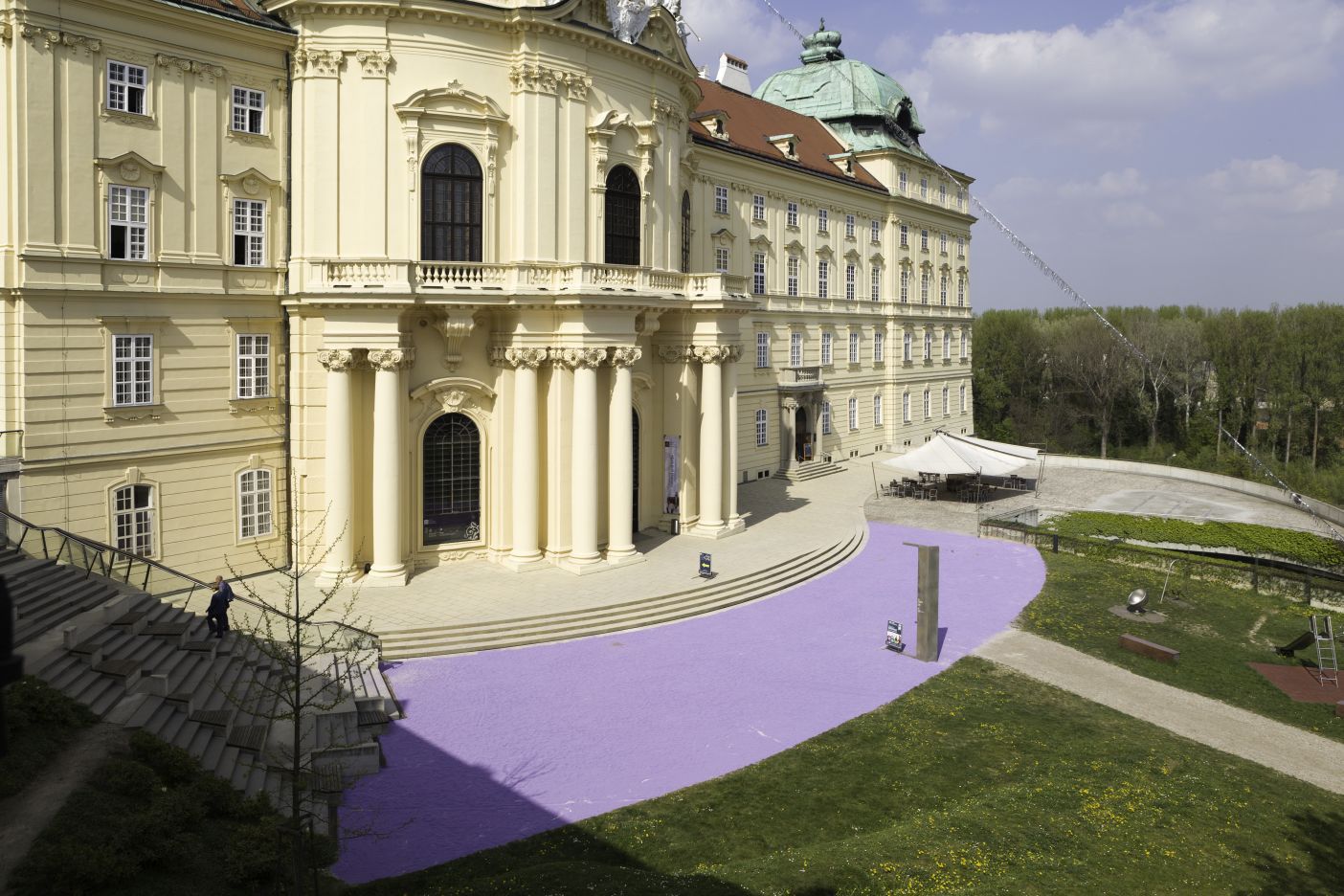
The building complex of the Klosterneuburg Monastery features many historical periods and aesthetic formal languages, all of which are associated with the representative role of a residence of the House of Babenberg and later the House of Habsburg. Over the years, the different architectural styles in the Klosterneuburg Monastery have become intertwined in a kind of collage, in contrast to other monasteries that are often characterized by a uniform architectural ensemble. Originating with the remnants of a Roman military camp, the grounds were then expanded over the centuries and developed from a small Romanesque mediaeval castle to a complex with additional Gothic and Renaissance-inspired buildings, to a Baroque residence for the emperor and an unfinished monastery palace modelled after the Spanish Escorial. In addition to these more glamorous features, the monastery also houses the oldest vineyard in Austria and is home to the Leopoldi Fair, whose secular tradition goes back 300 years. Amusement, glamour, a mix of styles, the adoration of saints, and power politics are thus all reflected in these buildings, as are pastoral care, asceticism, the golden age of culture and science, and a wealth of artistic treasures. The three outdoor artistic interventions surround the monastery with surprising formal solutions that are placed at various points around the grounds, each located at a place that has a specific meaning for the monastery's history. The three artists all share a skepticism toward the formal canons of high culture and modernism, playing with them humorously, or overriding them altogether. All three also work with design elements that are borrowed from the public realm and everyday culture, while also taking a site-specific approach. After all, the history of the monastery offers fascinating material: the tradition of celebrations and the "Fasslrutschen" (sliding down a large wine barrel) as well as the 900-year-old history of building construction served as reference points for each artist to develop their artistic ideas.
In his working method, Christoph Meier focuses on how we interact with objects. For his project, he used the famous work Verb List Compilation: Actions to Relate to Oneself (1967/68) by Richard Serra as a key reference with which to question conventions of sculpture. Meier likes to work with materials and objects that have a history within the context of art or that derive from the social environment of the artist and his everyday practice. The randomness with which objects from his studio become part of his works is just as integral to the artwork's concept as is his copying already existing works or objects. Meier is interested in destabilizing authorship as a category, and he insists on the preliminary quality of works as a specific approach within the art context. Only when we walk around the entire monastery are we able to fully understand Meier's intervention in the Klosterneuburg Monastery. Hidden away in the courtyard of the apothecary garden, we encounter the ten-meter-high Ferris wheel designed by the artist. The wheel refers to the tradition of the Leopoldi Fair, which has been celebrated in the monastery and the surrounding area since the seventeenth century. In addition to the many fair attractions, the so-called “Fasslrutschen” (sliding down the side of the monastery’s gigantic cask that holds roughly 56,000 liters) also has its traditional place in the celebrations. Sitting in a chair that rotates on a vertical axis in sync with other riders is the most abstract form of amusement Christoph Meier could imagine. He thus connects obvious concepts – like community, interaction, and balance with his use of language as a sculptural device. The exploration of the geometric and abstract vocabulary of forms and their performative and narrative potential is characteristic for Meier’s working method. This is reflected in the simple form of the circle, which in this case becomes charged with the experience of exhilaration and community.
Linking a vocabulary of forms from high culture and modernism with the standardized material language of industrial objects and products is a key theme in Manuel Gorkiewicz's artistic practice. He counteracts the heroic formal language of modernism through the use of mundane decorative elements. At a basic level, his sculptures also address the role of taste and its socio-economic associations and contexts. By giving original materials like streamers, lanterns, and other decorative elements unusual dimensions and forms associated with art history, he creates baffling ambiguities and decontextualizes objects in art and the public space. Manuel Gorkiewicz’s architectural intervention for the Klosterneuburg Monastery consists of silver PVC foil pennant strings that remind us of those used to attract customers at car dealerships. As a temporary ornament, the foil connects seven distinct points of the monastery leading from the former canonesses’ church, to the Baroque dome modeled after the emperor’s crown, up to the monastery church. Like an oversized sewing thread, Gorkiewicz ties together the stylistically heterogeneous buildings of the monastery that have continued to expand and be remodeled since the twelfth century. The intervention creates a sense of bewilderment through its merging of a geometric order with a decorative and mundane material used frequently in suburban areas. The flair of the flapping foil corresponds to the sensuousness of the Baroque facade and is also reminiscent of artistic interventions in the 1970s by Gordon Matta-Clark, whose works like Splitting and Conical Intersect lent public buildings and private houses new sculptural forms.
Many of Nicole Wermers' artworks illustrate her interest in the structure and design of public space and the world of commodities. The way our environment is organized and what is thus communicated is a key focus of her sculptures and installations. Often odd everyday objects serve as triggers that enable us to draw conclusions about the state of society through their symptomatic emergence and placement. Wermers concentrates on not only small forms of design, like muesli mixes, dispensers, or standard ash trays, but also on larger structures, like shelves, street cafés, or anti-theft detectors. By processing these in different ways – creating new versions, and placing them in new contexts – she reveals the sculptural aspects of these elements, while also referring to their structural significance. In their new form, these objects often appear so out of place that even their everyday function seems strange. For the Klosterneuburg Monastery, Nicole Wermers replaced the pavement in front of the ground-floor hall (the so-called sala terrena), which after renovation in 2006 became the new main entrance of the monastery, with a mixture of colored sand, glass, and natural stone elements in various shades and sizes. In her personal mixture of elements created especially for the monastery, she refers to the 900 years of history of its architecture. From its beginning as a small castle in the High Middle Ages, to its remodeling into an unfinished monastery palace, up to its most recent comprehensive renovation in 2005, the monastery’s appearance is marked by a multitude of intersecting styles. As if to create a sense of alienation or a surreal dream image, the somewhat psychedelic mixture of sand creates a new way of looking at the heterogeneous complex of buildings, its dazzling splendor reflecting the aesthetics of the church’s artistic treasures. (Cosima Rainer)


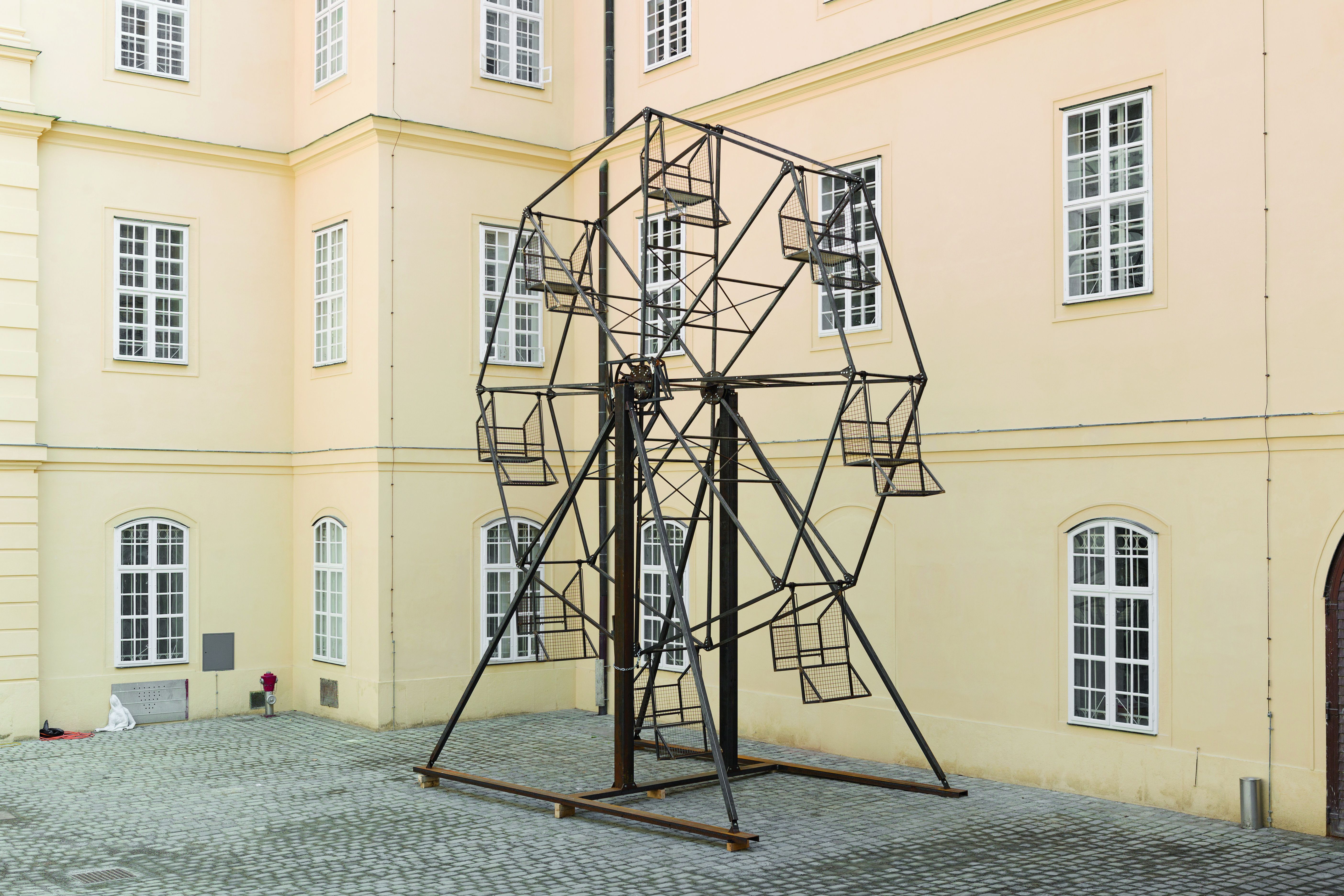

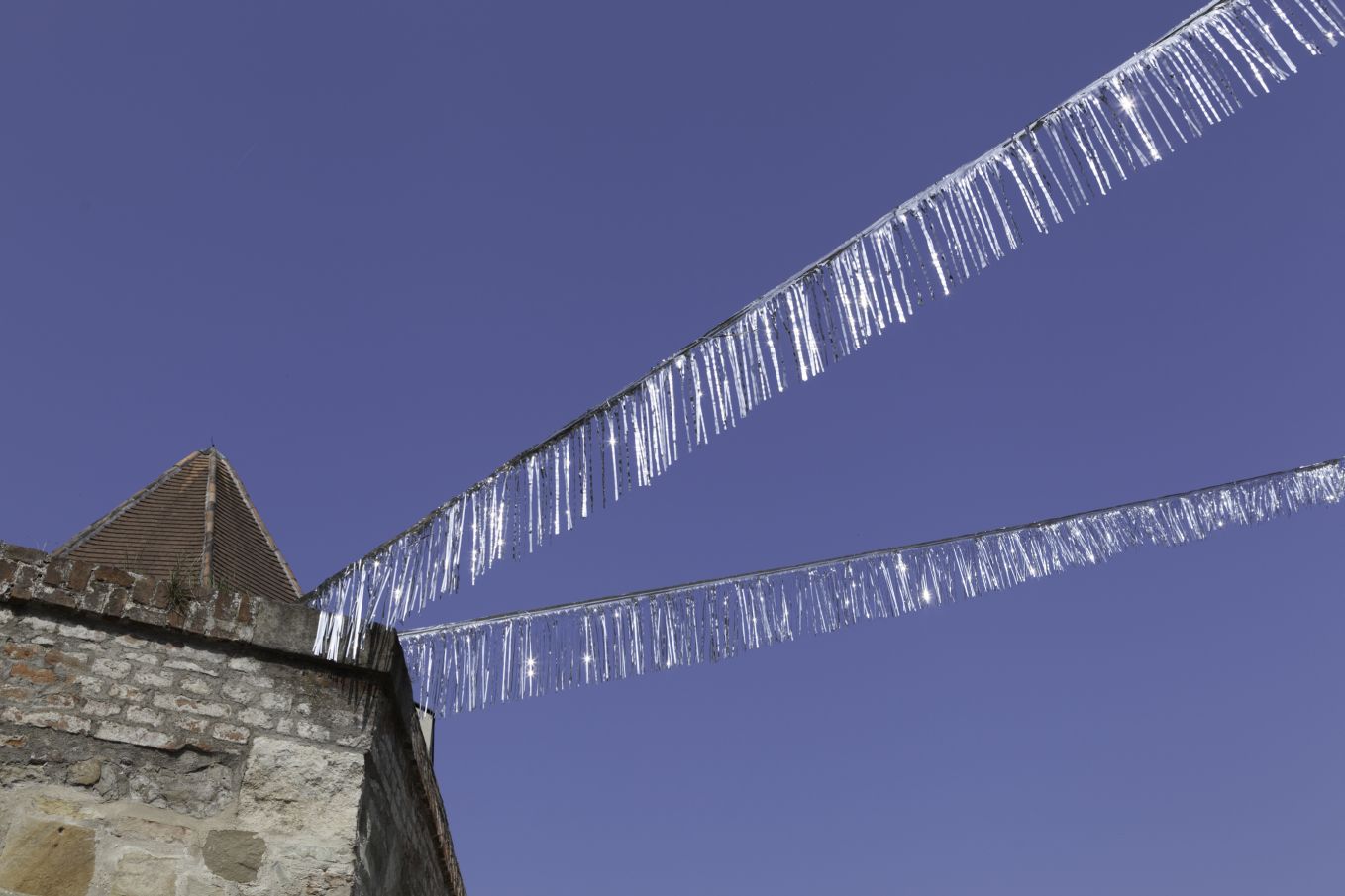
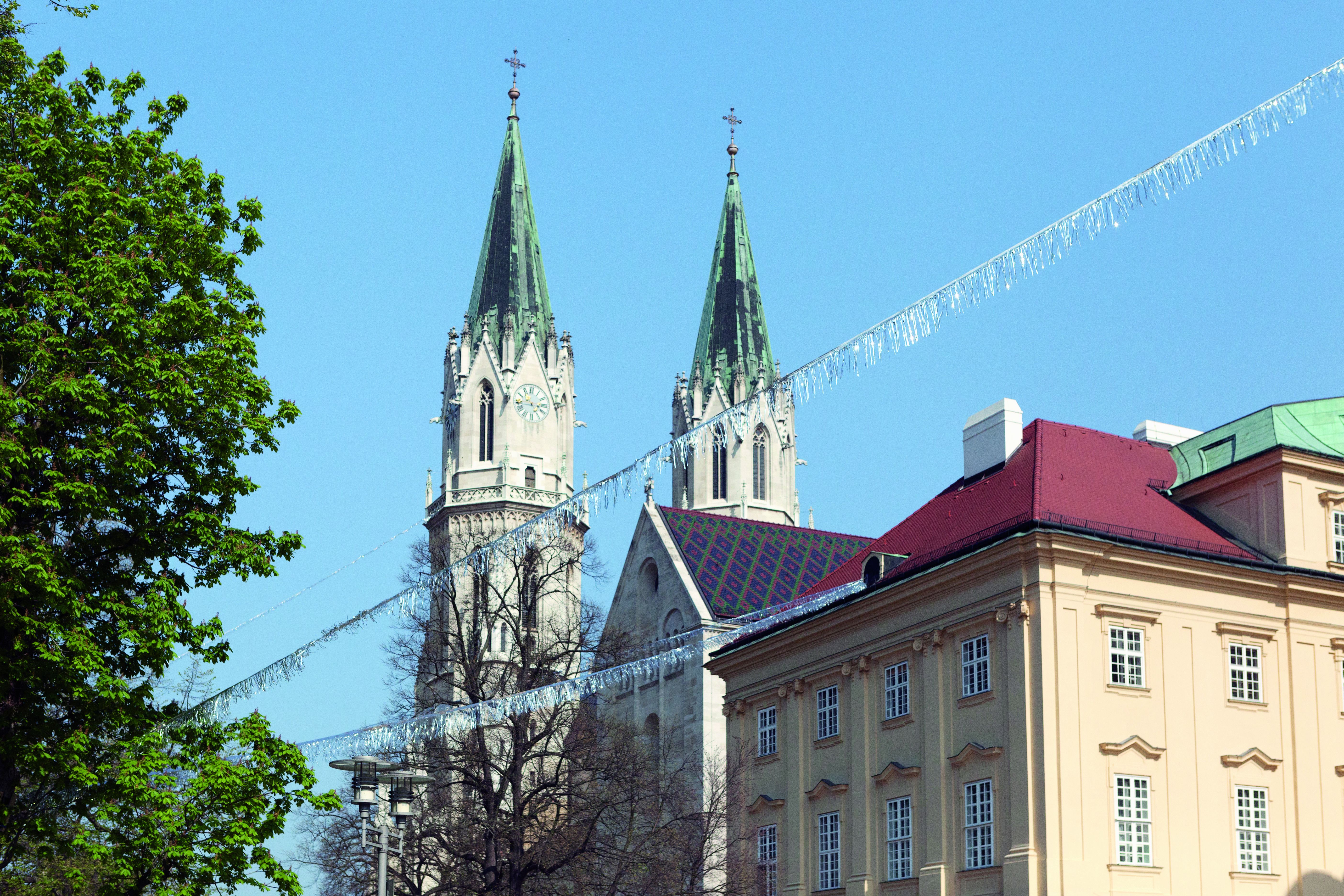
Nilbar Güreş, Mladen Bizumic, Eva Chytilek, Maruša Sagadin, Chris Fladung, Julia Williams, Clemens Wolf, Steinbrener/Dempf
Indoor projects
The Klosterneuburg Monastery opened its doors metaphorically and physically for this anniversary project, in which six artists were offered the chance to engage in a dialogue with central sites within the monastery. The result was that its sacral places – the monastery church, Leopoldi Chapel, and Verdun Altar, cloister garden, and the lobby of the Sebastiani Chapel – became interwoven with the secular parts of the monastery, like the wine cellar and the marble hall of the emperor's former residence. The artists invited were chosen with the idea in mind that they would be able to engage in an eye-level "dialogue" with the specific historical, formal, and thematic situation of the site. That the themes addressed could all too easily invite different opinions meant that artistic sensitivity and artists' clear understanding of their own position was required in order to respectfully and productively handle potential ideological differences. The results speak for themselves and demonstrate in different and surprising ways what makes up the quality of such interventions in existing structures: namely, the complex interaction between engaging with what is already there and the ability to confidently rely on one's own approach to these particular demands. Because of the largeness and spaciousness of the area, we thought it was necessary to find something that would unite all nine projects relating to these actual sites. That is why one artist was also invited to take an overall look at the monastery and the projects, independent of any specific location, which was aptly done in a sound work instead of a visual one.
Images (3)
